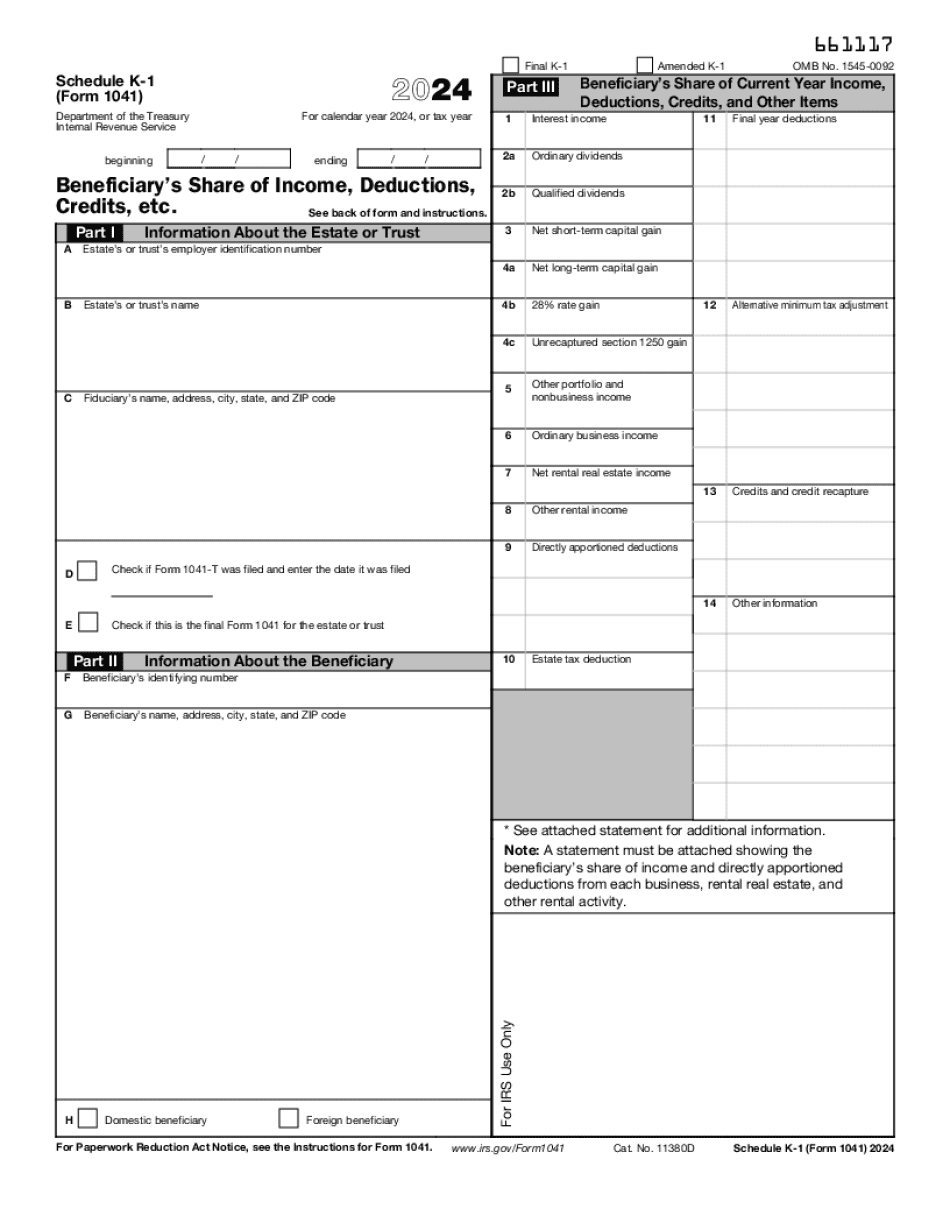Award-winning PDF software





Form 1041 (Schedule K-1) Texas Dallas: What You Should Know
Tax Forms, Publications and Publications — Steven E Miller, CPA PC Dallas, TX CPA Firm | IRS Tax Forms and Publications Page | Steven E Miller The Basics of Fiduciary Income Taxation — ACTED The income of your beneficiaries should be reported on a Schedule K1 to report to the IRS. IRS Tax Forms and Publications — Steven E Miller, CPA PC Dallas, TX CPA Firm | IRS Tax Forms and Publications Page | Steven E Miller Fiduciary income tax can be a complex topic. The basics include: 1. What is a trust? Families establish trusts to manage the personal financial affairs of their loved ones. Many trusts are legally separate from their owners. Trusts give owners and beneficiaries some financial and legal rights but usually cannot do these things without the owners' consent. Each trust is governed independently by a separate document known as the will, which lays out the beneficiaries' rights and responsibilities. However, the beneficiary of a trust is usually a person under a specific legal title to the assets. The beneficiary is an individual, an estate unit (as defined in Section 529 of the tax code, for example), or a trust. Your beneficiaries could be: a specific person with whom you have an estate-owned home, or your spouse's deceased husband; a non-person; a non-taxpayer of the estate; a business; a corporation; a trade or business; a trust; or an LLC. 2. How much does a trust pay in income tax? Although, in general, a trust pays no taxes, there are some tax benefits your beneficiary receives if you establish a trust. Some of these are below: the trust does not: a) pay income tax on its income, gains, gains of certain interest, profits, rents, etc.; Â b) pay corporate income tax on its taxable income of which more than one-third of the income came from you; e.g. your non-taxable dividends c) pay self-employment tax; or, d) pay Medicare tax on your own earnings; The “trust income” means taxable income but, if it is from someone other than an individual, it is reportable either as income or as capital gains or losses.
Online methods assist you to arrange your doc management and supercharge the productiveness within your workflow. Go along with the short guideline to be able to complete Form 1041 (Schedule K-1) Texas Dallas, keep away from glitches and furnish it inside a timely method:
How to complete a Form 1041 (Schedule K-1) Texas Dallas?
- On the web site along with the sort, click Commence Now and go to your editor.
- Use the clues to complete the suitable fields.
- Include your personal info and contact data.
- Make certainly that you simply enter right knowledge and numbers in ideal fields.
- Carefully verify the articles from the type in addition as grammar and spelling.
- Refer to aid portion for those who have any queries or tackle our Assistance team.
- Put an digital signature on your Form 1041 (Schedule K-1) Texas Dallas aided by the enable of Indicator Instrument.
- Once the form is completed, push Finished.
- Distribute the all set variety by means of e-mail or fax, print it out or help save on the product.
PDF editor allows you to make adjustments with your Form 1041 (Schedule K-1) Texas Dallas from any world-wide-web connected equipment, personalize it in line with your requirements, indication it electronically and distribute in several methods.
